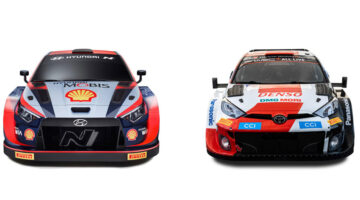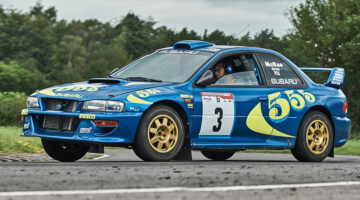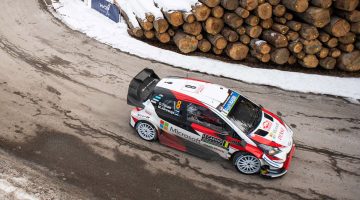crankandpiston.com takes on the final round of the World Rally Championship in Great Britain. And as Nick Dungan finds out, there’s quite a lot of walking involved.
[Not a valid template]It’s 6.15am in the morning, I’ve been walking for an hour through the Welsh countryside carrying enough warm clothes, waterproofs, food and water for a short Antarctic expedition. And yet despite what the kit list might suggest, I’m not attempting to climb Mount Snowdon. I’m trying to reach my chosen viewpoint to photograph the British round of the World Rally Championship.
Despite the WRC not being quite the championship it once was when the likes of Colin McRae and Richard Burns were heading the time sheets, it is still one of the top motor racing series in the world. So when an opportunity to shoot the event presented itself, I duly ceased it with both hands.
Fresh from my stint at this year’s British Grand Prix, I arrive at the service park the Wednesday before kick-off with thoughts of Formula 1 paddocks and glamour in my mind. These were quickly dashed, as the service park was in fact based in an industrial park next to a Toyota factory. Hard to believe that in the paddock not ten yards away there was a fleet of resting WRC cars poised under a range of pop-up gazebos.
During my briefing there is talk of GPS co-ordinates, Zero cars, Double Zero cars (which alert spectators across a stage that the section is now live and to expect rally cars at pace), sweeper cars, and a mind boggling set of timetables that detailed when each car should enter and exit a stage. Should any of this intricate organisation go horribly wrong, being hopelessly lost in the Welsh countryside was a real threat.
That evening I met up with a group of very event photographers that had very kindly (and perhaps foolishly) photographers agreed to help me out. They gave me a crash course in how a rally works, explaining that of perhaps the six or eight stages in a day you could expect to shoot between one and two stages. Some stages were more than a two-hour drive apart and access was via mud tracks more suited to tractors. They explained how to read the utterly confusing road books and told me which stages I’d stand a good chance of getting some shots. This would transpire to be a God-send.
At a crisp and slightly blurry 5.30am, I made the 30-minute drive to the first stage, abandoning my car in the mud track that inexplicably doubled up as Media Parking. Soon the sight of a Volvo S60, lights ablaze on Zero Car duty, alerted myself and the group of photographers I had joined to the imminent arrival of the first car. The purposeful scream of a rally car soon burst over the Welsh hills through the mist, and seconds later a Volkswagen Polo WRC threw itself impossibly fast into the corner I was standing at, shooting out the other side with a lethal trail of rocks following it. I was a little stunned: I barely had time to focus my camera.
One of the few luxuries with the WRC is that most cars are around two minutes apart, so there is plenty of time to review images, check settings and even move position without missing any action. As the day continues, I become more and more accustomed to the very different approach to health and safety that WRC photographers and spectators have. I even pluck up the courage to stand on the apex of a corner with just blades of grass between the car and myself, and a cliff on the other side. And this is just the first stage of 22.
Story continues on page 2



